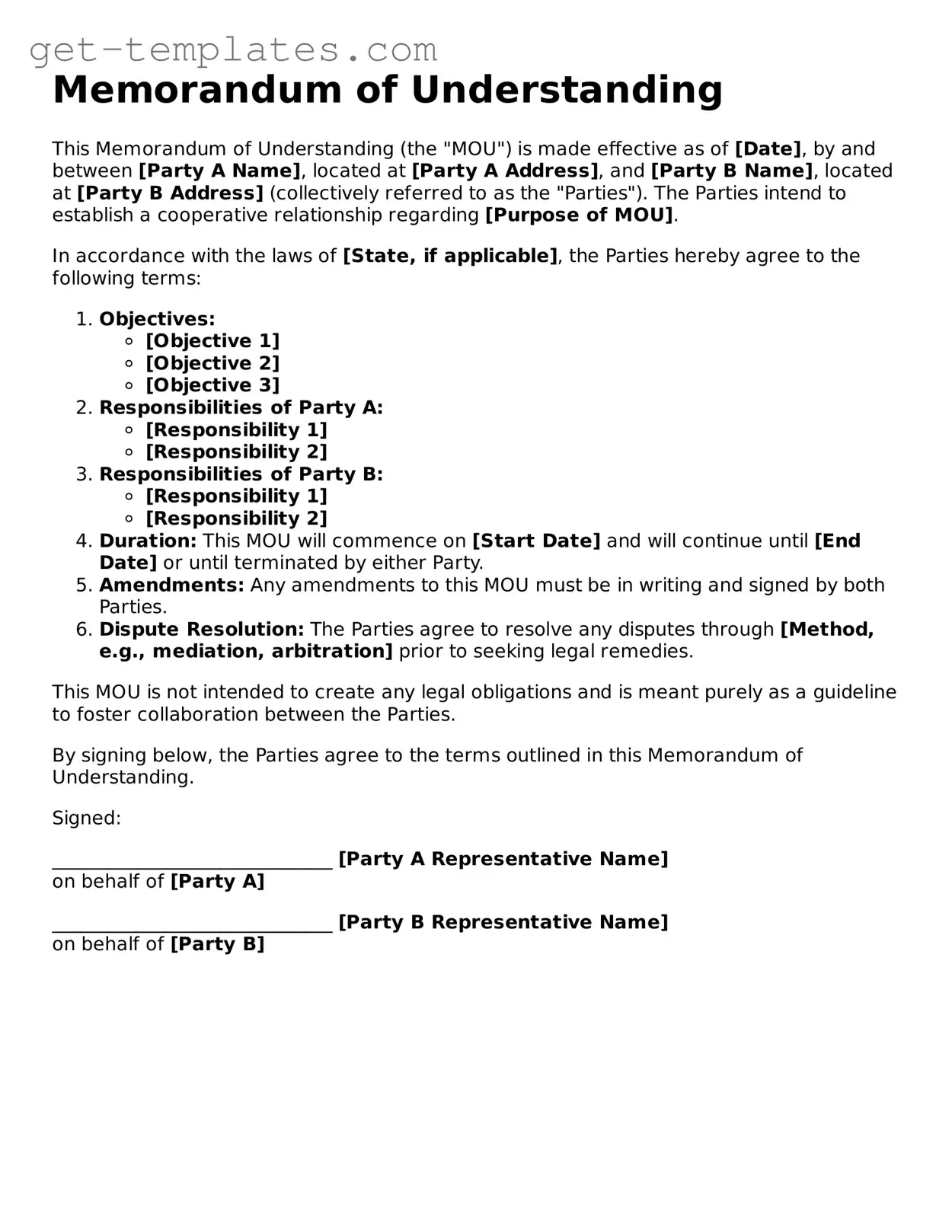Memorandum of Understanding
This Memorandum of Understanding (the "MOU") is made effective as of [Date], by and between [Party A Name], located at [Party A Address], and [Party B Name], located at [Party B Address] (collectively referred to as the "Parties"). The Parties intend to establish a cooperative relationship regarding [Purpose of MOU].
In accordance with the laws of [State, if applicable], the Parties hereby agree to the following terms:
- Objectives:
- [Objective 1]
- [Objective 2]
- [Objective 3]
- Responsibilities of Party A:
- [Responsibility 1]
- [Responsibility 2]
- Responsibilities of Party B:
- [Responsibility 1]
- [Responsibility 2]
- Duration: This MOU will commence on [Start Date] and will continue until [End Date] or until terminated by either Party.
- Amendments: Any amendments to this MOU must be in writing and signed by both Parties.
- Dispute Resolution: The Parties agree to resolve any disputes through [Method, e.g., mediation, arbitration] prior to seeking legal remedies.
This MOU is not intended to create any legal obligations and is meant purely as a guideline to foster collaboration between the Parties.
By signing below, the Parties agree to the terms outlined in this Memorandum of Understanding.
Signed:
______________________________ [Party A Representative Name]
on behalf of [Party A]
______________________________ [Party B Representative Name]
on behalf of [Party B]
